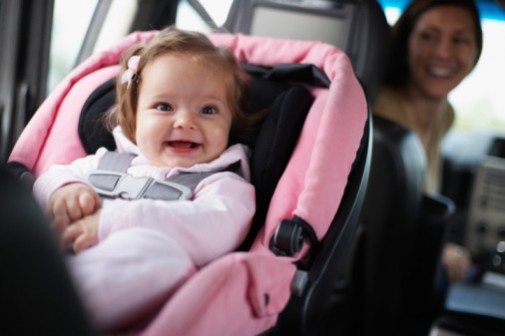Don’t relax car seat rules for kids this summer

Millions of families are hitting the roads for the annual summer travel season, and with that comes a greater chance for vehicle crashes involving kids, experts say. Though it may be tempting to relax the rules, keeping children properly restrained on those long road trips is essential.
According to the National Highway Traffic Safety Administration (NHTSA), nearly 5,000 children age 14 and younger were killed in vehicle crashes in 2011. And sadly, 41 percent of those kids were not restrained. Vehicle crashes were the leading cause of death for kids between the ages of 4 and 11 according to the most recent statistics, in 2009.
The numbers are troubling but also avoidable. The NHTSA says there’s no doubt that car seats, booster seats and regular seat belts save lives.
When used properly, car restraints have been shown to reduce the risk of a fatality by 45 percent, the NHTSA says. Almost 10,000 children under the age of 5 have been saved by child restraints since 1975.
Dr. Rishi Sikka, an emergency medicine physician with the Advocate Medical Group says keeping your kids restrained should be priority one.
“Though sometimes children will fuss or resist being put in a car or booster seat, it’s critical that parents and caregivers do the right thing and keep kids safe,” he said. “It’s also essential the children are fitted properly and the right restraints are used based on the child’s age, weight and height.”
But finding just the right seat can be a little tricky. The American Academy of Pediatrics (AAP) offers guidelines on their website when it comes to choosing the right restraints.
Infants/Toddlers
Infants and toddlers should ride in a rear-facing car seat until they are 2 years old or until they reach the highest weight or height allowed by their car seat’s manufacturer.
Toddlers/Preschoolers
Any child who is 2 years or older and has outgrown the rear-facing weight or height limit for their car seat, should use a forward-facing car seat with a harness for as long as possible, up to the highest weight or height allowed their car seat’s manufacturer.
School-aged Children
All children whose weight or height is above the forward-facing limit for their car seat should use a belt-positioning booster seat until the vehicle seat belt fits properly, typically when they have reached 4 feet 9 inches in height and are between 8 and 12 years of age.
Older Children
Once kids are old and large enough they should always use the equipped standard lap and shoulder belts.
Related Posts
Comments
5 Comments
About the Author
health enews staff is a group of experienced writers from our Advocate Health Care and Aurora Health Care sites, which also includes freelance or intern writers.


















In my experience, consistency is key. If you don’t keep them in their car seats, next time you’re in the car the kids will want that again. Not only is it a safety hazard, but avoids future challenges from my kids!
Challenges???
great information. Its important to know when kids should be in different seats and positions in order to stay safe.
Here are two videos about car seat safety from Bloomington-Normal pediatrician, Andrea Kane.
https://www.youtube.com/watch?v=A9OtWUNm9ls
https://www.youtube.com/watch?v=FCoR2CV-TQk
This is a good reminder that car safety should never be taken lightly!